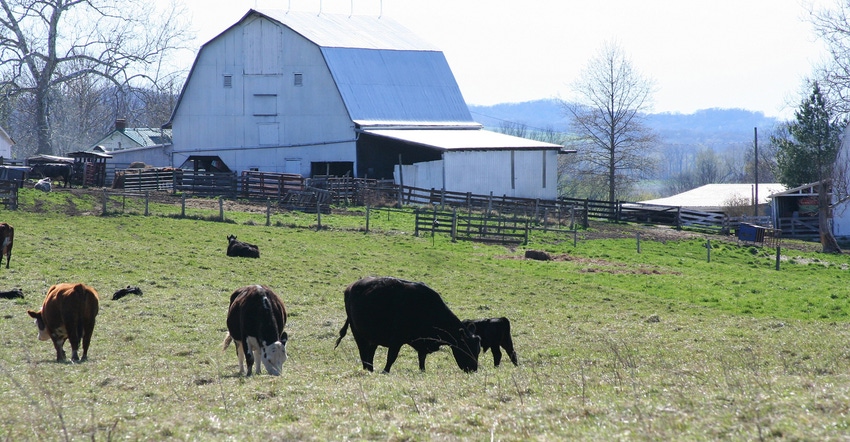Reduce grass tetany in your beef operation
Don’t turn beef cattle out to spring pasture until you read these tips.

Cattle losses due to grass tetany reduce a beef operation’s productivity and profitability, Patrick Davis says. Proper management now can limit grass tenany's effect on your farm this spring.
Grass tetany is related to mineral imbalances in cattle, and if not prevented, it can lead to sickness and death, explains Davis, a University of Missouri regional livestock field specialist, in an MU news release.
However, there are management strategies cattle producers can incorporate in the winter months to reduce grass tetany before turning beef cows out on pasture.
Provide supplements
Spring lush forage has potential to be high in potassium and low in sodium, Davis explains. However, both are important for absorption and utilization of magnesium by the animal.
Still, when it comes to grass tetany, magnesium is the likely mineral deficiency. Cattle need about 0.04% to 0.1% magnesium in the dry matter ration, according to the MU Extension Guide, Mineral Supplements for Beef Cattle.
However, in areas of the state where grass tetany is common, higher levels of magnesium — up to 0.25% of dry matter intake — may prove beneficial.
But it is not only magnesium cattle need to ward off grass tetany. Davis says recent evidence suggests deficiencies in sodium are connected to grass tetany as well.
Beef producers can add both sodium and magnesium into a complete ration, as a supplement in the feed or free choice. Davis prefers the free choice method to give cattle unlimited access to minerals. To make an impact in staving off grass tetany, farmers should start feeding minerals one month before pasture turnout.
Frost-seed legumes
Planting legumes and maintaining adequate pasture fertility help reduce the incidence of grass tetany in your cattle herd, Davis says. Frost-seed clovers and lespedeza now. These grow well with cool-season grasses in Missouri and improve spring and summer pastures.
Consider using a drill or broadcast to seed clovers and lespedeza. Davis prefers drilling because it improves seed-to-soil contact for better establishment.
Legumes are high in magnesium compared to grasses, and through cattle consumption should help reduce the incidence of grass tetany.
However, hold off on pasture fertilizer applications until you test the soil. Davis says grass tetany is more likely in cattle grazing pastures overfertilized with nitrogen and potassium. This practice reduces the plant's magnesium availability to the animal. He advises cattle producers to test soil and apply only required nitrogen and potassium fertilizers.
Wait to graze
Avoid grazing new grass until it reaches 4 to 6 inches tall to reduce the incidence of grass tetany in your cattle herd.
Shorter, immature plants have magnesium that is less available to the animal. For proper magnesium consumption, Davis urges cattle producers to graze new grass when it reaches heights above 6 inches.
The age of the animal grazing matters as well. Older early lactation cows are the most susceptible to grass tetany, Davis adds. Early lactation cows release large amounts of magnesium in milk during lactation.
Davis says this combined with an older cow’s reduced ability to mobilize bone magnesium leads to low serum magnesium levels and subsequent development of grass tetany.
Cattle producers should limit grazing of animals such as dry cows, heifers, stocker cattle and cows nursing calves more than 4 months old on lush green pastures.
Plan ahead for treatment
Animals that have frequent urination, erratic behavior, muscle tremors or convulsions after being turned out on pasture this spring may have grass tetany. Davis says cattle producers should plan ahead.
Consult your veterinarian to plan treatment in case your cattle exhibit any of these signs. Together, develop treatment protocols. “Because swift action may lead to saving the animal,” Davis adds.
University of Missouri Extension contributed to this article.
About the Author(s)
You May Also Like





